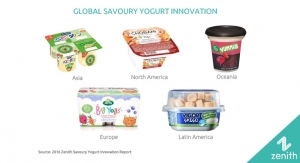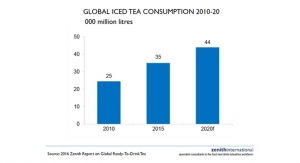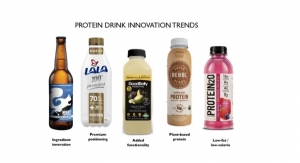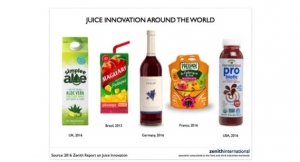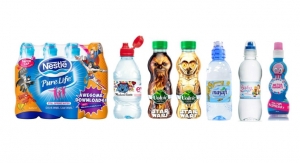06.02.14
Despite the economic downturn and the uneven recovery since 2008, baby food has bucked the trend, which has held back most industries’ performance. In 2009, when the global economy went into reverse, the category actually grew by 7% in value.
Currently, specialist food and drink industry consultancy Zenith International estimated the market at more than $50 billion and it is forecast to be the fastest growing packaged food category over the next 5 years, achieving growth in excess of 7% a year. The strong growth has been bolstered by emerging markets, where the global financial crisis was less severe and where birth rates are still relatively high, according to Esther Renfrew, market intelligence director at Zenith.
Asia is the fastest growing region in infant nutrition, at an annual rate of about 19%, largely driven by China. In China, improved living standards among the growing middle class and increased health awareness are stimulating purchases. Demand for imported products, regarded as safer since the recent melamine scandal, has been pushing prices up. Currently there are 160 million children aged between 3 and 13 years old in China. A 2012 baby boom in the year of the dragon, together with China’s one child policy, means demand for premium products will continue to grow in the coming years. In China, the number of mothers who breastfeed exclusively for 6 months is reported to be less than 30%. This is partly because baby formula is thought to be healthier and helps babies bulk up.
Indonesia is another key country driving market growth. It has the world’s 4th largest population, around 22 million children under the age of 4, Asia’s second-highest birth rate and rising wealth. Multinational companies are building new production facilities there to meet the increasing demand—Nestlé has invested $200 million to start production of powdered milk and its Milo drink this year. Baby milk powder producers are linking the health benefits of milk with both mental and physical success, which appeals to their target group of middle-class parents. Since malnutrition had caused the death of millions of young children in Indonesia, the government has encouraged exclusive breast-feeding from birth until 6 months. However, this is a real challenge for women in a modernizing society and more are choosing powdered infant milk as an alternative.
High quality and safety credentials are primary criteria for consumers and branded items are more strongly associated with these features. In many food categories, private label products compete successfully on price against brands. It appears, however, that the last item on which consumers seem to economize is baby food. Higher prices are justified by the perceived better nutritional value for babies from high quality branded products.
Currently, specialist food and drink industry consultancy Zenith International estimated the market at more than $50 billion and it is forecast to be the fastest growing packaged food category over the next 5 years, achieving growth in excess of 7% a year. The strong growth has been bolstered by emerging markets, where the global financial crisis was less severe and where birth rates are still relatively high, according to Esther Renfrew, market intelligence director at Zenith.
Asia is the fastest growing region in infant nutrition, at an annual rate of about 19%, largely driven by China. In China, improved living standards among the growing middle class and increased health awareness are stimulating purchases. Demand for imported products, regarded as safer since the recent melamine scandal, has been pushing prices up. Currently there are 160 million children aged between 3 and 13 years old in China. A 2012 baby boom in the year of the dragon, together with China’s one child policy, means demand for premium products will continue to grow in the coming years. In China, the number of mothers who breastfeed exclusively for 6 months is reported to be less than 30%. This is partly because baby formula is thought to be healthier and helps babies bulk up.
Indonesia is another key country driving market growth. It has the world’s 4th largest population, around 22 million children under the age of 4, Asia’s second-highest birth rate and rising wealth. Multinational companies are building new production facilities there to meet the increasing demand—Nestlé has invested $200 million to start production of powdered milk and its Milo drink this year. Baby milk powder producers are linking the health benefits of milk with both mental and physical success, which appeals to their target group of middle-class parents. Since malnutrition had caused the death of millions of young children in Indonesia, the government has encouraged exclusive breast-feeding from birth until 6 months. However, this is a real challenge for women in a modernizing society and more are choosing powdered infant milk as an alternative.
High quality and safety credentials are primary criteria for consumers and branded items are more strongly associated with these features. In many food categories, private label products compete successfully on price against brands. It appears, however, that the last item on which consumers seem to economize is baby food. Higher prices are justified by the perceived better nutritional value for babies from high quality branded products.


